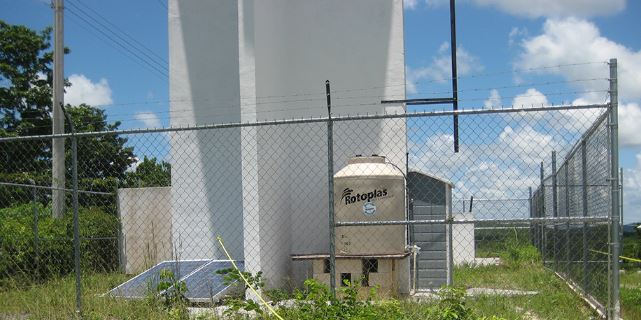A solar power system has been designed and installed in a rural Mexican village that delivers clean drinking water to its people. The village in the jungle of the Yucatan Peninsula would otherwise be a day’s drive from another clean source of water.
The system basically uses reverse osmosis – that means that the solar panels provide the power to push dirty well water through a semiporous membrane leaving all the salts and heavy minerals behind. The clean water is then transported into a large tank ready for drinking.
The system was designed by Steven Dubowsky, a professor of mechanical engineering and of aeronautics and astronautics at MIT and his team. It consists of a large tank to store purified water, several solar pv panels and a small shed which contains the pumps, filters, membranes and computers that run the whole system.
The Professor has been testing the project in Mexico for the past four months and believes it could go a long way to helping people have clean drinking water – a basic necessity for most. “There may be 25 million indigenous people in Mexico alone,” Dubowsky says. “This is not a small problem. The potential for a system like this is huge.” Even on a cloudy day, the system has produced around 1000lts of clean drinking water – enough to supply the whole village of 450 people.
Prior to this, villagers had to buy purified bottle water in 20 litre containers when (or if) it was able to be trucked in at the cost of 20 pesos per bottle. Obviously, many were unable to afford the price and water they could boil and drink was used sparsely. The system developed by the MIT team can deliver clean drinking water for less than one pesos per 20lt bottle.
The system needs some maintenance and locals are being trained to handle it on their own. “The maintenance of the system is going to be in the hands of the community,” Dubowsky says. “The idea is to give people a real sense of self-worth and self-reliance.” The system has been designed using easily available materials and with ease of assembly in mind so that auto mechanics would have the skills to assemble one.
With a few months of testing under their belts, the MIT team has fine-tuned the system to operate to its full potential in the conditions where it is installed. They have faced some obstacles being so isolated and far from any water sources but they have overcome these challenges and hope the system can be used in other communities and villages like it around the world.

